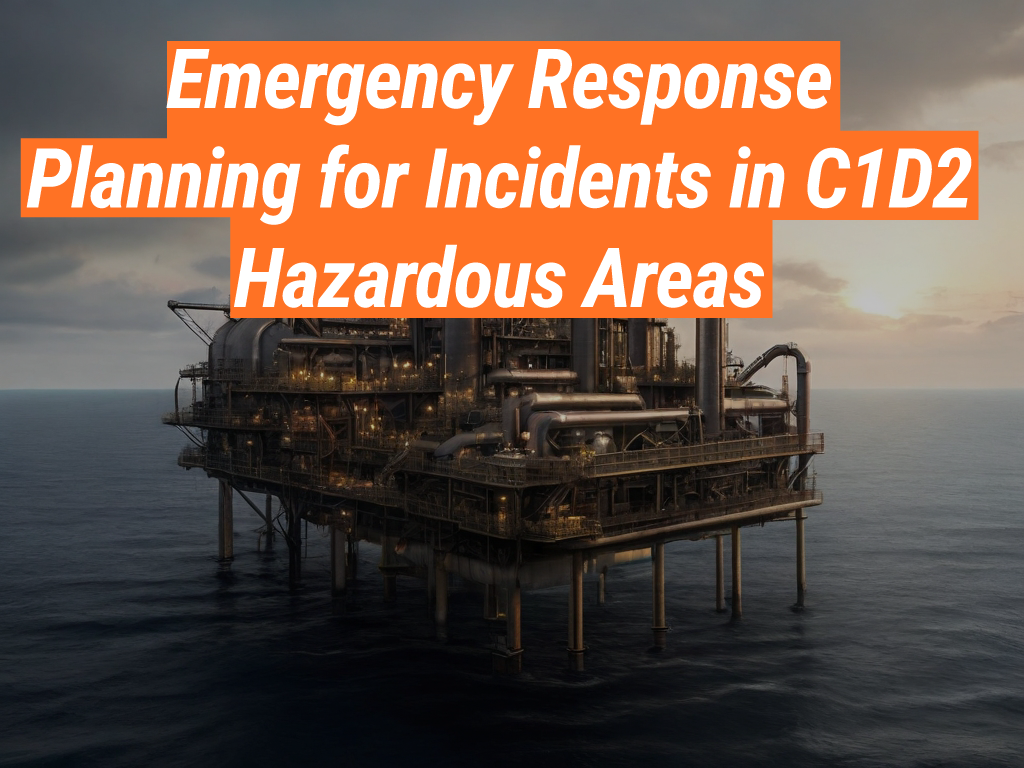When it comes to safety in hazardous environments, nothing is more critical than having a well-thought-out emergency response plan. This is particularly true for Class 1 Division 2 (C1D2) areas, where the risk of explosion or fire due to flammable gases or vapors is high. In this article, we will delve into the intricacies of emergency response planning for incidents in C1D2 hazardous areas. We encourage you to visit our website to learn more about our offerings.
Understanding C1D2 Hazardous Areas
Before we delve into emergency response planning, it’s crucial to understand what C1D2 hazardous areas are. These are spaces where flammable gases or vapors may be present in the air in quantities sufficient to produce explosive or ignitable mixtures. Examples of such areas include petroleum refineries, dry cleaning plants, and spray finishing areas.
The Importance of Emergency Response Planning
Emergency response planning is vital in C1D2 hazardous areas for several reasons. Firstly, it helps to prevent incidents by identifying potential hazards and implementing measures to mitigate them. Secondly, it ensures that in the event of an incident, there is a clear and effective response strategy in place to minimize harm to personnel and damage to property.

Key Elements of an Emergency Response Plan
An effective emergency response plan for C1D2 hazardous areas should include the following elements:
- Risk Assessment: This involves identifying potential hazards and assessing the risk they pose.
- Prevention Measures: These are steps taken to mitigate the identified risks.
- Emergency Procedures: These outline the steps to be taken in the event of an incident.
- Training and Drills: Regular training and drills ensure that all personnel are familiar with the emergency procedures.
- Review and Update: The plan should be regularly reviewed and updated to reflect changes in the workplace or lessons learned from incidents.
Role of Safety Equipment
Safety equipment plays a crucial role in both the prevention of incidents and the response to them. This is where Intrinsically Safe Store comes in. We offer a wide range of safety equipment designed for use in hazardous areas, including C1D2 areas. Our products include intrinsically safe flashlights, gas detectors, and communication devices, all of which can be invaluable in an emergency situation.
Case Study: The Value of Preparedness
A case study that illustrates the value of emergency response planning is the 2010 Deepwater Horizon oil spill. The incident, which resulted in 11 deaths and significant environmental damage, was attributed in part to inadequate emergency response planning. Had there been a more robust plan in place, the consequences of the incident could have been significantly mitigated.
In conclusion, emergency response planning is crucial for incidents in C1D2 hazardous areas. A well-thought-out plan can help prevent incidents, minimize harm when they do occur, and ensure a swift and effective response. Safety equipment, such as that offered by Intrinsically Safe Store, plays a vital role in this process. We encourage you to visit our website to learn more about our offerings. If you have any questions or need further assistance, please do not hesitate to contact us.


